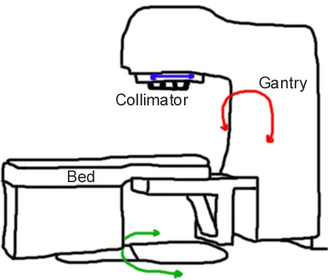Isocentric technique
Isocentric technique is a method used in radiation therapy that involves the rotation of the radiation source around a fixed point (isocenter) within the body. This technique is crucial for delivering precise doses of radiation to treat cancer and other diseases while minimizing exposure to surrounding healthy tissues.
Overview
The isocentric technique is a cornerstone in modern radiation therapy, allowing for the delivery of high doses of radiation to tumors with great accuracy. By rotating the radiation source around the patient, the isocenter remains stationary, ensuring that the radiation beam is precisely focused on the target area from multiple angles. This approach is beneficial for treating irregularly shaped tumors or those located near critical structures.
Application
The isocentric technique is widely used in various forms of radiation therapy, including External Beam Radiation Therapy (EBRT) and Intensity-Modulated Radiation Therapy (IMRT). It is particularly effective in stereotactic radiosurgery (SRS) and stereotactic body radiotherapy (SBRT), where high precision is paramount.
Advantages
- Precision and Accuracy: By maintaining a fixed isocenter, the technique ensures that radiation is accurately delivered to the target, reducing the risk of damage to surrounding healthy tissues.
- Flexibility: The ability to rotate the radiation source around the patient allows for optimal angles for radiation delivery, making it possible to treat complex tumor shapes and locations.
- Efficiency: Isocentric techniques can often deliver the required dose in fewer treatment sessions compared to traditional methods, improving patient convenience and reducing overall treatment times.
Challenges
- Complexity: The planning and execution of isocentric radiation therapy require sophisticated equipment and software, as well as highly trained professionals.
- Quality Assurance: Ensuring the accuracy of the isocenter position and the radiation dose distribution is critical, necessitating rigorous quality assurance protocols.
Conclusion
The isocentric technique represents a significant advancement in radiation therapy, offering enhanced precision, flexibility, and efficiency in treating various cancers. Its success relies on the integration of advanced technology and skilled professionals to achieve the best possible outcomes for patients.
Transform your life with W8MD's budget GLP-1 injections from $125.
W8MD offers a medical weight loss program to lose weight in Philadelphia. Our physician-supervised medical weight loss provides:
- Most insurances accepted or discounted self-pay rates. We will obtain insurance prior authorizations if needed.
- Generic GLP1 weight loss injections from $125 for the starting dose.
- Also offer prescription weight loss medications including Phentermine, Qsymia, Diethylpropion, Contrave etc.
NYC weight loss doctor appointments
Start your NYC weight loss journey today at our NYC medical weight loss and Philadelphia medical weight loss clinics.
- Call 718-946-5500 to lose weight in NYC or for medical weight loss in Philadelphia 215-676-2334.
- Tags:NYC medical weight loss, Philadelphia lose weight Zepbound NYC, Budget GLP1 weight loss injections, Wegovy Philadelphia, Wegovy NYC, Philadelphia medical weight loss, Brookly weight loss and Wegovy NYC
|
WikiMD's Wellness Encyclopedia |
| Let Food Be Thy Medicine Medicine Thy Food - Hippocrates |
Medical Disclaimer: WikiMD is not a substitute for professional medical advice. The information on WikiMD is provided as an information resource only, may be incorrect, outdated or misleading, and is not to be used or relied on for any diagnostic or treatment purposes. Please consult your health care provider before making any healthcare decisions or for guidance about a specific medical condition. WikiMD expressly disclaims responsibility, and shall have no liability, for any damages, loss, injury, or liability whatsoever suffered as a result of your reliance on the information contained in this site. By visiting this site you agree to the foregoing terms and conditions, which may from time to time be changed or supplemented by WikiMD. If you do not agree to the foregoing terms and conditions, you should not enter or use this site. See full disclaimer.
Credits:Most images are courtesy of Wikimedia commons, and templates, categories Wikipedia, licensed under CC BY SA or similar.
Contributors: Prab R. Tumpati, MD

